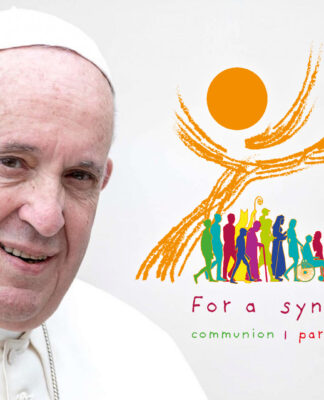LANGUAGE barrier, differences in culture, religious beliefs, and even physical appearance—these are some of the challenges foreign students studying in UST have had to deal with.
But take it from Indonesian Zanita Afirin, a third-year political science student, things eventually get better.
“I did not have a hard time making friends or adjusting to people because Thomasians are helpful, especially to foreigners like me,” she said.
Beyond the school, she said Filipinos were generally easy to get along with, unlike in her native country “where the environment is individualistic.”
“Filipinos are positive about everything as if everything is going to be okay,” she said.
Adjusting naturally required her to become familiar with Filipino, the national language, so she would not be lost in translation. Eventually, she became at ease with the culture and has since loved her decision to study here.
Just like Afirin, Microbiology Junior Anthony Cadelina’s first few months at the University were an adjustment period. His half-Guamese and half-Filipino father was a soldier assigned in Germany, where he was raised. But the family later decided to go back to the Philippines for his college education.
Cadelina’s search for a good school led him to UST where his uncle had studied.
“I was given a choice whether to study in the Philippines, United States, or in Japan,” he said. “Without a doubt, I chose where I really came from. I wanted to know my roots as a Filipino.”
To be honest, he said he didn’t like the pollution and the unsafe sidewalks around UST. But these realities did not keep him from appreciating the beauty of his school, its rich Catholic tradition, including its uniform.
“I do not like the traffic, much more the pollution. But nonetheless, I like UST for its uniforms and the chapel which Germany does not really patronize,” he said.
Cadelina’s adjustment took some six months, which included what he called “culture shock.” He said he almost dropped out of all his subjects.
“I used to be a different person but the people here taught me the value of hard work and faith. I have learned that one should just enjoy life, and smile even at the smallest joys,” he said.
Flood experiences
Nigerian Dominic Uche’s adjustment period included some flood experience. Uche, an economics student, recalled having been stranded on campus during Typhoon Ondoy.
“I just could not forget that night,” he said. “I was in the Accountancy building back then and no matter how badly I wanted to go home, I just could not because of the flood.”
But the bad experience did not discourage him from leaving UST and continue his education elsewhere. In fact, he said he had never gone back to Nigeria since he went in the Philippines to study.
“It is cool here. I have good friends and I cannot miss the yearly festivities like Paskuhan (the annual Christmas celebration,” he said.
Ronald Villegas, a second-year philosophy student raised in California in the United States, experienced what it was like to be marooned in UST during Typhoon Falcon.
“The knee-high floods surprised me as I rushed after my last class,” he recalled. “I planned to treat my aunt to merienda but it seemed that Falcon got jealous.”
Back in America, he said UST was well-known.
“The University definitely has a good reputation. The best nurses and other professionals abroad are mostly Thomasian graduates,” he said.
Villegas added: “Before, I knew UST (only) as the school were the children of the rich and the ilustrados were sent to. Now that I am here, it is actually more than that. Thomasians are very nice people, definitely nicer than my classmates back in America. One of the best things I like about Thomasians and most Filipinos as well, is that they know how to offer you food and ask if you have eaten already,” Villegas said. Margaret Rose B. Maranan















